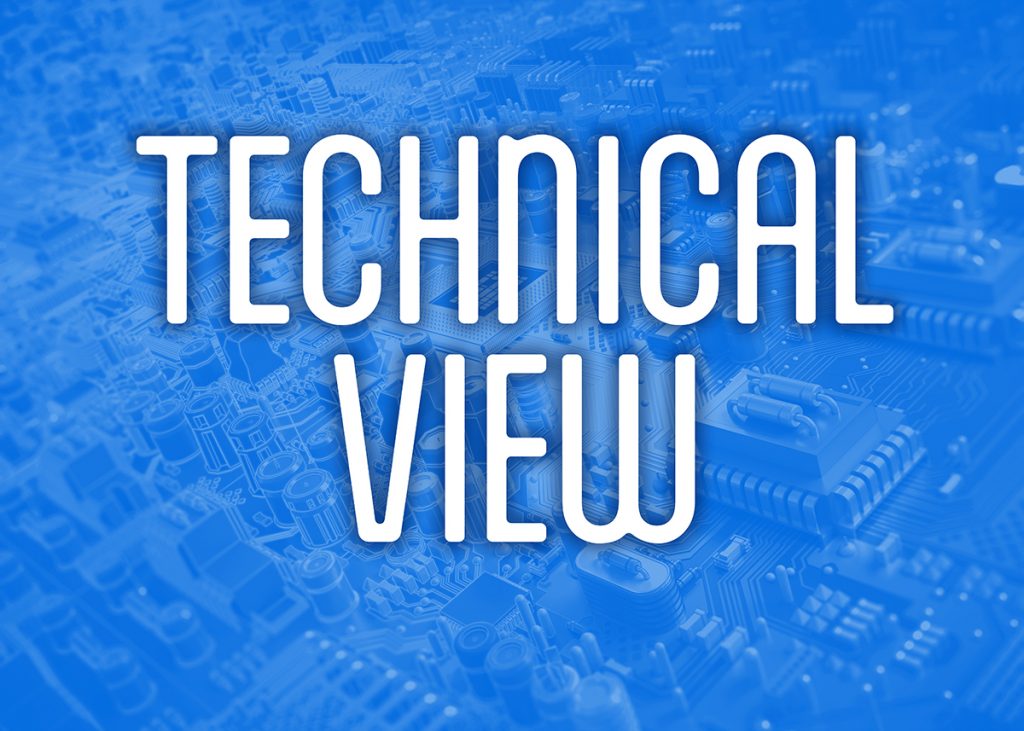How advanced electronics technologies will help manufacturers profit from the opportunities in decarbonization
Future Electronics is forecasting strong growth in demand for electronic components that support device-level energy harvesting, residential and commercial energy storage systems, and dc metering of systems such as electric vehicle chargers.
By Riccardo Collura
Vertical Segment Manager Power (EMEA), Future Electronics

At a national and global level, policies for decarbonization and ending the world’s dependence on fossil fuel energy are focused on a small number of very high-impact technologies:
- The installation of multi-gigawatt wind farms and solar farms
- The expansion of nuclear fission generation and continued investment in nuclear fusion
- The replacement of combustion engine propulsion by battery electric vehicles, as well as electrically-powered aircraft
The production of the energy infrastructure and new technologies to support these systems is dominated by a small number of global manufacturers.
But the achievement of the goal of net zero requires decarbonization and electrification across nearly every type of power-consuming application, large and small, with few exceptions. And this has interesting implications for Europe’s many thousands of small and medium-sized manufacturers of electronics products. Opportunity for innovation in the design of smaller scale equipment abounds, and large global OEMs are often ill-equipped to fill the gaps in markets that are emerging out of the trend to decarbonize.
Smaller product manufacturers, on the other hand, can profit from these new opportunities. In many cases, they can do so by taking advantage of features and capabilities in the latest electronic components.
Opportunities in decarbonization at less than grid-scale
As a broadline electronic component distributor serving a diverse customer base of industrial, communications and consumer product manufacturers, Future Electronics has a bird’s eye view of the trends in applications and system design across the continent of Europe. It is clear to us that the drive towards decarbonization, driven by governments, enterprises and consumers, is creating new opportunities in three areas in particular.
The first is in solar energy harvesting. This is in part driven by geopolitics: the Western world has decided to ‘de-risk’ its relationship with China, and this is going to involve a considerable amount of reshoring of the production of key technologies, including photovoltaic energy generation. So solar panel manufacturing, which today is almost entirely located in giant Chinese factories, is likely to return in part to Europe and North America. This creates opportunities for European manufacturers to gain an unexpected share of a previously closed market.
At the micro-scale, growth in solar energy harvesting is being driven by innovation in electronic technology that supports new use cases. In particular, solar energy harvesting is enabling a new architecture for sensing systems. When autonomous, batteryless wireless sensors and actuators can be entirely decoupled from grid power and have no need for battery charging or replacement for the whole of their lifetime, it becomes possible to completely rethink the way they are sited and used. Improvement in the technology for converting and using harvested solar energy is making this change possible.
The second arena of change driven by decarbonization is in energy storage systems (ESS). At national and regional levels, electricity infrastructure operators are hoping to use various sources of stored energy to balance out the fluctuations in the energy generated by wind and solar power sources. One way or another, financial incentives will be used to encourage householders and companies to deploy ESS, and to allow the two-way exchange of electrical power to balance the grid. Design innovation is still required to make it viable for systems such as repurposed electric vehicle (EV) batteries to be used in residential and commercial ESS, and to enable on-demand bidirectional energy exchange. Here the implementation of new semiconductor technology, wide bandgap semiconductors made of silicon carbide (SiC) material, is becoming essential to achieve higher conversion efficiency than is possible with silicon semiconductors.
The third opportunity is in metering, and particularly in dc metering at the point-of-load. For the adoption of ESS to become widespread, the owners of ESS equipment will need to feel confident that they are being correctly paid for the energy that they supply to the grid, and correctly billed for consumption: this requires dedicated meters.
Another example is in public EV charging infrastructure. EV batteries are mainly charged with direct current, but utility-grade meters used in public charging stations typically measure the mains ac power consumed by the charging equipment. EV drivers, or the regulators which represent them, will eventually object to being charged for an ac input when the value to them comes from the dc output supplied to the car’s battery. Ac metering rewards charging station operators for installing chargers that have a cheap but inefficient ac-dc conversion stage, and penalizes the EV driver. Before long, the EV market will likely demand the use of accurate dc meters at the point-of-load to measure the energy that is actually supplied to the car’s battery.
Such regulatory requirements, if they materialize, are likely to open the metering market to new, innovative companies that will fragment the market, in much the same way as has happened in the market for solar inverters.
Component innovation generates new opportunities
The opportunities are clearly visible, then. But the race to profit from them will depend in large part on the extent to which manufacturers successfully deploy new technology that confers a performance or cost advantage.
In small-scale solar energy harvesting for wireless sensors, the crucial function is ultra-efficient conversion of the harvested power input to a useful, regulated output to drive the sensor circuit. Component technology continues to provide improved efficiency and integration: this is reflected in the specifications of the NEH2000BY from Nexperia, a dedicated power management IC (PMIC) for solar energy harvesting shown in Figure 1. This PMIC provides a high-efficiency dc-dc converter which can operate with harvested power inputs as low as 35 µW. Crucially, the PMIC implements an integrated maximum power point tracking (MPPT) algorithm, which continually optimizes circuit operation to maximize the power supplied to the load.
 Fig. 1: The NEH2000BY energy-harvesting PMIC from Nexperia is supplied in a 16-terminal QFN package with a footprint of 3 mm x 3 mm
Fig. 1: The NEH2000BY energy-harvesting PMIC from Nexperia is supplied in a 16-terminal QFN package with a footprint of 3 mm x 3 mm
Advanced technology is also transforming prospects in the energy storage arena: wide bandgap SiC semiconductors are enabling storage units to perform power conversion more efficiently, with lower power losses, than traditional silicon MOSFETs or IGBTs.
The migration from silicon-based power switches to the use of SiC MOSFETs calls for a different design approach: the superior thermal performance and higher switching frequencies enabled by SiC technology mean that manufacturers can rethink the thermal and magnetic components that are used. According to Infineon, a change from superjunction MOSFETs to CoolSiCTM MOSFETs can provide around a 2% increase in energy capacity without increasing battery size.
An excellent starting point for a design team developing a new ESS product is a reference design supplied by a leading SiC MOSFET manufacturer such as Infineon, onsemi or STMicroelectronics. For instance, Infineon’s REF-DAB11KIZSICSYS is a CLLC resonant dc-dc converter board which can supply a load of up to 11 kW at an output voltage of 800 V, as shown in Figure 2. With its highly efficient bidirectional power flow capability and soft-switching characteristics, it is the ideal building block for fast prototyping of any ESS design, and is also suitable for use in EV charging stations. The board is based on the 1,200 V IMZ120R030M1H CoolSiC™ MOSFET in a TO-247 package, driven by a 1EDC20I12AH gate driver IC.
Also useful in three-phase EV chargers rated for up to 11 kW is the STMicroelectronics TN4050HA-12GY, a 40 A/1,200 V automotive-grade silicon-controlled rectifier thyristor. Featuring a 400 A/10 ms surge-current rating, this robust thyristor enables the designer to implement a compact inrush-current limiter in a vehicle on-board charger, or the phasing switch of a solar power inverter rated for up to 440 V ac and 11 kW.
 Fig. 2: The REF-DAB11KIZSICSYS reference design board from Infineon is small and light, making for easier integration into ESS designs
Fig. 2: The REF-DAB11KIZSICSYS reference design board from Infineon is small and light, making for easier integration into ESS designs
The third area in which component technology helps small and medium-sized manufacturers exploit new opportunities is in dc metering. The design of utility-grade ac electricity meters is highly constrained by regulation. In dc metering, however, there is scope for more innovation. Across various functional domains, the latest technology will:
- Perform accurate energy measurement
- Reduce the size, weight and cost of the meter
- Provide more reliable and convenient wireless connectivity and a user-friendly interface
A useful starting point for a new dc meter design is the EVALSTPM-3PHISO energy meter evaluation board from STMicroelectronics, shown in Figure 3. Based on the STPMS2, a dual-channel, 24-bit sigma-delta modulator, the board measures voltage and current for each of three ac phases through a voltage divider and a shunt current sensor. A selectable high-pass filter allows for measurement of dc current and voltage.
The sensing circuitry and PCB layout maximize the signal-to-noise ratio to give the best possible measurement accuracy.

Fig. 3: The EVALSTPM-3PHISO evaluation board implements a complete three-phase energy meter with low-cost shunt current sensors
Expert support for use of new components
In all of these applications and use cases, the use of new component technology can be facilitated by drawing on the expertise of the Advanced Engineering Group at Future Electronics. This group includes regional specialists in domains such as power management, sensing, and embedded systems. The group is backed by the hands-on design engineering expertise of the Centre of Excellence, which develops sophisticated reference designs for various power-conversion functions.
The combination of advanced component technology, specialist advice, and the innovation and engineering skills of Europe’s small and medium-sized electronics OEMs provides a sure foundation for the exploitation of the new opportunities presented by the continent’s moves towards decarbonization.
